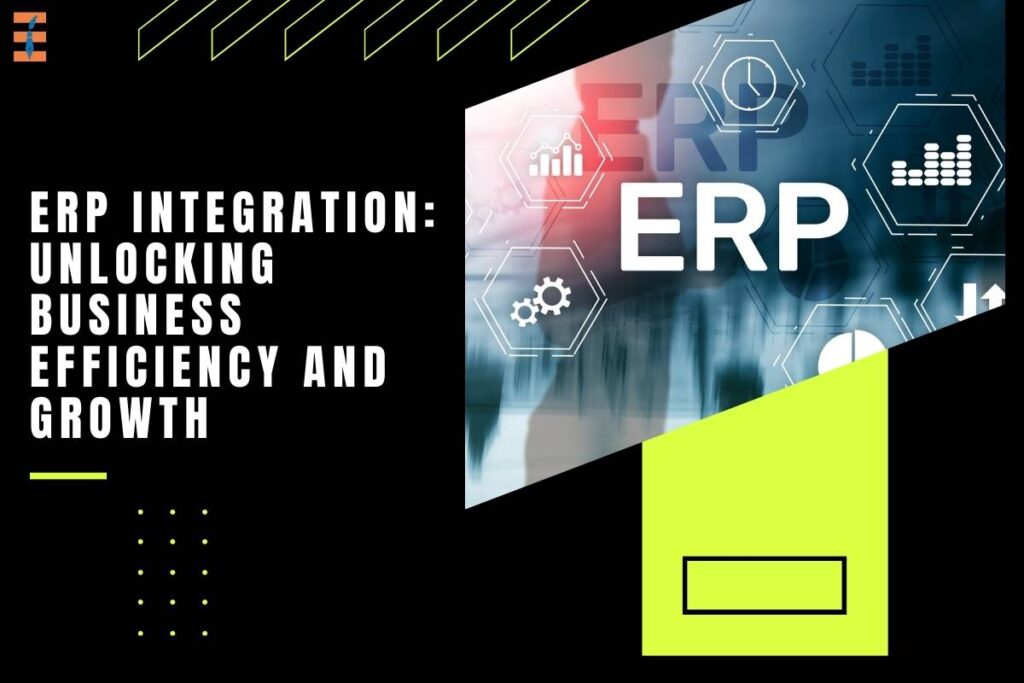In today’s fast-paced business landscape, organizations strive to streamline their operations, enhance productivity, and maintain a competitive edge. Enterprise resource planning (ERP) is an integrated software application system that manages day-to-day business processes and operations across finance, human resources, procurement, distribution, supply chain, and other functions. It enables companies to operate more efficiently and make data-driven decisions. This article will explore the importance of ERP integration, its key benefits, challenges, and best practices to ensure successful implementation.
Concept
Enterprise Resource Planning (ERP) systems are comprehensive software solutions that manage and automate core business functions such as finance, human resources, supply chain, and customer relationship management. ERP integration involves connecting these systems with other organizational applications and data sources to create a unified, cohesive environment.
Why does it Matter?
1. Enhanced Data Visibility and Accessibility
One of the primary advantages of ERP integration is the centralization of data. By integrating various systems, businesses can consolidate information from different departments into a single source of truth. This improved data visibility enables decision-makers to access real-time insights and make informed choices.
2. Streamlined Processes and Improved Efficiency
Integrating ERP systems eliminates the need for manual data entry and reduces redundant processes. By automating workflows and ensuring seamless communication between systems, businesses can achieve higher efficiency and productivity. For instance, integrating an ERP system with a customer relationship management (CRM) tool can streamline order processing, resulting in faster turnaround times and improved customer satisfaction.
3. Cost Savings

Integration of ERP into the systems can lead to significant cost savings by reducing operational inefficiencies and minimizing errors. Automated processes reduce the likelihood of costly mistakes, such as incorrect data entry or missed deadlines. Additionally, by eliminating redundant systems and consolidating resources, organizations can cut down on maintenance and licensing expenses.
4. Improved Collaboration and Communication
It fosters better collaboration and communication across departments. With a unified system, employees can easily share information, collaborate on projects, and access the data they need to perform their tasks efficiently. This improved communication enhances teamwork and helps in achieving organizational goals more effectively.
Key Benefits
1. Centralized Data Management
ERP integration centralizes data from various sources, providing a holistic view of the organization’s operations. This centralized data management ensures that all departments have access to accurate and up-to-date information, facilitating better decision-making and strategic planning.
2. Real-Time Reporting and Analytics
Integrated ERP systems enable real-time reporting and analytics, allowing businesses to monitor key performance indicators (KPIs) and track progress toward goals. With instant access to data, organizations can identify trends, spot potential issues, and make data-driven adjustments to optimize performance.
3. Scalability and Flexibility
ERP offers scalability and flexibility to accommodate business growth and changing needs. As companies expand, integrated ERP systems can easily incorporate new functionalities and modules without disrupting existing processes. This scalability ensures that the ERP solution can evolve alongside the organization.
4. Enhanced Customer Experience
By integrating ERP with customer-facing systems like CRM and e-commerce platforms, businesses can deliver a seamless and personalized customer experience. Integrated systems enable a 360-degree view of customer interactions, preferences, and purchase history, allowing businesses to tailor their offerings and improve customer satisfaction.
Challenges
While ERP integration offers numerous benefits, it also presents certain challenges that organizations need to address for successful implementation.
1. Complexity of Integration
Integrating ERP systems with existing applications and data sources can be complex and time-consuming. The process often requires careful planning, technical expertise, and coordination between different teams. Organizations must ensure that all systems are compatible and that data flows seamlessly between them.
2. Data Security and Privacy

As ERP integration involves the exchange of sensitive data across various systems, ensuring data security and privacy is paramount. Organizations must implement robust security measures, such as encryption, access controls, and regular audits, to protect against data breaches and unauthorized access.
3. Change Management
Implementing ERP integration often involves significant changes to existing workflows and processes. Employees may resist these changes, leading to potential disruptions and delays. Effective change management strategies, including training, communication, and stakeholder engagement, are essential to ensure a smooth transition and user adoption.
4. Cost and Resource Allocation
ERP integration projects can be costly, requiring investments in software, hardware, and skilled personnel. Organizations must carefully allocate resources and budget for the integration process to avoid unexpected expenses and ensure successful implementation.
Best Practices
To maximize the benefits of ERP integration and mitigate potential challenges, companies should follow these best practices:
1. Thorough Planning and Assessment
Before integrating ERP into the project, conduct a thorough assessment of your current systems, processes, and data sources. Identify integration points, define clear objectives, and develop a detailed project plan that outlines timelines, milestones, and resource requirements.
2. Choose the Right Integration Tools
Selecting the right integration tools and technologies is crucial for the seamless growth of the business. Consider factors such as compatibility, scalability, ease of use, and vendor support when choosing integration solutions. Common tools include middleware, application programming interfaces (APIs), and data integration platforms.
3. Ensure Data Quality and Consistency
Data quality and consistency are critical for successful integration. It Cleanse and standardize data before integration to eliminate duplicates, errors, and inconsistencies. Implement data governance practices to maintain data integrity and ensure that all integrated systems use accurate and reliable information.
4. Involve Stakeholders and End Users
Engage stakeholders and end users throughout the integration process to gain their support and address their concerns. Conduct regular meetings, provide training, and gather feedback to ensure that the integrated system meets the needs of all departments and users.
5. Test and Validate Integration

Thoroughly test the integrated system before going live to identify and resolve any issues or discrepancies. Conduct end-to-end testing, including data validation, workflow testing, and performance testing, to ensure that all components work seamlessly together.
6. Monitor and Maintain the Integrated System
Continuous monitoring and maintenance are essential to ensure the long-term success of ERP integration. Regularly review system performance, update software, and security measures, and address any issues promptly to keep the integrated system running smoothly.
Conclusion
ERP integration is a powerful strategy for enhancing business efficiency, improving decision-making, and driving growth. By centralizing data, streamlining processes, and enabling real-time insights, integrated ERP systems empower organizations to operate more effectively and stay competitive in a dynamic business environment. While ERP integration presents challenges, following best practices and leveraging the right tools can ensure a successful implementation and unlock the full potential of your ERP solution.
Investing in ERP integration is a strategic move that can yield significant returns, from cost savings and improved productivity to enhanced customer experiences and scalability. As businesses continue to evolve, ERP integration will remain a key enabler of innovation, efficiency, and success.

